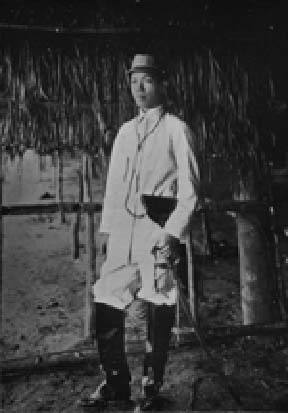Emilio Aguinaldo y Famy was born into the local elite of Cavite on the Island of Luzon in the Philippines. His father had been Mayor of Kawit (Cavite Viejo) at the time of his death in 1878, a post Emilio himself would hold in 1895. That same year Aguinaldo joined the secret, nationalist brotherhood Katipunan founded by Andrés Bonifacio. After the Philippines revolted against the Spaniards in 1896, Aguinaldo led & won several victories in Cavite Province. When Bonifacio came out of hiding in March,1897 and tried to re-assert his leadership of the Katipunan, Aguinaldo ordered his arrest, imprisonment, and eventual execution on May 10, 1897.
Katipunan forces retreated to the mountains in the face of Spanish attacks. Ultimately, Aguinaldo entered into an accord with the Spaniards - agreeing to his exile in Hong Kong in exchange for 400,000 pesos. Soon after his arrival in Hong Kong, he purchased weapons his troops would require to continue the struggle in the Philippines.
After the U.S. declared war on Spain, Aguinaldo saw a possibility that the Philippines might achieve its independence. Instead, the U.S. hoped that Aguinaldo would lend his troops in its effort against Spain. He returned to Manila on May 19, 1898 and declared Philippine independence on June 12.
When it became clear that the United States had no interest in the liberation of the islands, Aguinaldo's forces remained apart from U.S. troops. On January 1, 1899 following the meetings of a constitutional convention, Aguinaldo was proclaimed President of the Philippine Republic. Not surprisingly, the United States refused to recognize Aguinaldo's authority. On February 4, 1899 he declared war on the U.S. forces in the islands. After his capture on March 23, 1901, Aguinaldo agreed to swear allegiance to the United States and then left public life. His dream of Philippine independence came true on July 4, 1946. He died in Manila in 1964.

